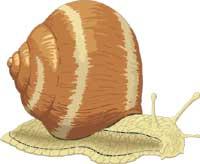Speeds, etc.

In the last works we have dealt with the peculiarities of fluids, and before them we have had light, sound and heat in this section of Enjoying Physics; on this occasion, we want to open the door of another section of great importance in Physics: Mechanical. And to start with Mechanics we start from the speed of some mobiles in our environment.
As we all know, the 100-meter world record is below 10 seconds. If we accept this number for our calculation, this means that in a second 10 meters are made, so at an hour, that is, 3,600 seconds, twenty kilometers. But what is clear is that for a human being it is impossible, making 100 meters at that speed is one thing and following that speed at one hour is very another. A normal pedestrian can walk fast and walk for 1.5 meters per second at that speed, that is, about 5 kilometers per hour, while the corridor can travel very little time at the aforementioned maximum speed.

In our daily life, we often take as an example the drawing or the turtle to express the slowness of one thing or another. The snails are really slow, their speed is only 5.4 meters per hour, that is, a thousand times younger than that of a man on foot. The turtle is also slow and goes much faster than lightning, as the turtle runs 70 meters per hour.
We have said that human beings are much faster than snails or turtles, but we lose that comparative advantage with other animals in our environment or with the phenomena of Nature. It is true that if we compare it with the water current of a river of a plain, our speed can be the same as that of water, and also with that of the normal wind. But when catching a fly, considering that it usually has a speed of five meters per second, the man would need skis to hunt the fly; and what to say if we mentioned a hare, a dog, a horse or an eagle.

However, human beings are faster than all the animals mentioned above, but for this we must take into account the machines created through their intelligence. In recent years, humans have designed floating motors that exceed eighty kilometers per hour. And on land it can go much faster than on water: conventional trains make 150 kilometers per hour and high-speed trains much more, what about cars? Our smaller car can also reach 180 kilometers per hour.

And when we go from ground to air the speeds acquire much greater numbers. Currently, a normal jet plane can reach an average speed of 1,000 kilometers per hour. Not many years ago, a problem in aviation was to overcome the “sound barrier” (1,200 kilometers per hour). Today there are many aircraft that can reach a speed of double to triple.
But, although these speeds are very high, man has invented much higher speed devices. The first artificial satellite, the Sputnik, was launched at a speed exceeding 28,000 kilometers per hour, almost 8 kilometers per second. And the interplanetary rockets have been launched at a speed known as “second cosmic speed”, that is, 11.2 kilometers per second, until you reach the Moon, Mars and Venus.
After Time

If at eight in the morning we leave by plane from Vladivostok, could we reach Moscow at eight in the morning of the same day? This question, on the one hand, is not foolishness and, on the other hand, its answer is affirmative. To understand this answer, we need to know that the difference between the time axes of Vladivostok and Moscow is nine hours, so the plane can travel the distance between these two cities in nine hours, and so, the time that the clocks of this city will mark when arriving in Moscow will be the same as those of Vladivostok at the beginning of the flight: Between Vladivostok and Moscow there are 9,000 kilometers. Therefore, the plane should have a speed of 9,000: 9 = 1,000 km/h, which is not a problem of the other world.

In polar latitudes the speed necessary to “overtake the Sun” (better said to the earth) is much lower. Thus, in New Zealand, for example, at the 77th parallel, the distance travelled by a plane at 150 km/h is the same that makes a point of the Earth when turning the Earth on its own axis at the same time. For the passengers of this plane the Sun will stand, as if suspended from the sky, and the night will never come (for this to happen, of course, the plane has to have a proper direction).

“Getting ahead of the Moon” is much easier on your tour around Earth. The Moon around the Earth, the latter moves twenty-nine times more slowly than around its axis (when making this comparison we take into account its angle and not line speeds). Therefore, a typical 25 km/h boat can “overtake” the Moon in mid-latitudes.

American writer Mark Twain uses this phenomenon in his work abroad. He wrote that “on a trip from New York to Azores, summer time was wonderful and nights more wonderful than days.

During the nights we discovered a surprising phenomenon: The moon appeared every night at the same time and in the same place of kneading. The subject of this particular behavior of the Moon was in principle a mystery to us, but then we understood it. The reason was that, in a geographic length of 20 minutes per hour, we were advancing at speed, that is, our speed was enough for the Moon not to advance us”.





